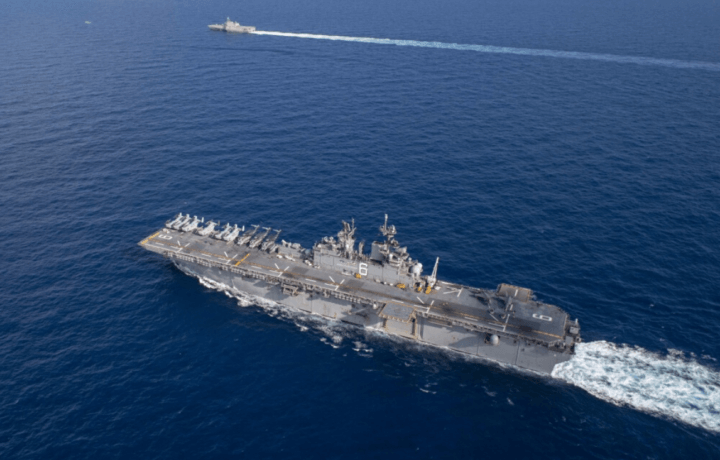Part of the Navy’s latest push for technological advancement has come via autonomous ships, i.e. drones. The branch has been lobbying for unmanned patrol vessels for months, and in January, they programmed $2.7 billion in funding for the program. The Navy has said it wants a fleet of autonomous boats that can fire and reload automatically.
“We want to create an unmanned magazine,” said Vice Adm. James Kilby, the head of the Office of the Chief of Naval Operations’ war-fighting requirements and capabilities office.
“And if you think about [it] from [that] perspective and I use that in conjunction with another force element where I can integrate fires, pass fire control from that element to the unmanned vehicle and deplete that magazine, send it back to reload, go back to using my magazine, wait for the unmanned magazine to return — I can sustain the fight longer.”
Vertical Launch System is a No Go
The proposed plan would make use of a vertical launching system, something that the Navy has been pushing for along with the ships themselves. This system, however, has acted as a speed bump during legislation. While Congress approved two unmanned surface vessels, it expressly forbade the implementation of a vertical launching system.
While such a system could provide both tactical and safety benefits, the issue lies in reliability. For Congress to believe in the project, their denial implies that they will need to see these ships in action. The two approved vessels will act as the first of the project’s prototypes. Overall, the prototypes will need to complete tens of thousands of hours of unmanned operations to demonstrate the reliability Congress is demanding.
Does Prototype Capability Translate to Real World Safety
“Our FY20 plans for our large USVs focused on two areas. One area is: Get more prototypes out there. Some of our technical risk is in integrating military capabilities. So we need the prototypes to start integrating those capacities and burn down some of that risk,”said Capt. Pete Small of the Program Executive Office Unmanned and Small Combatants.
While officials believe the ship’s autonomous capability is well within current capabilities, creating an integrated system that can react to threats nearby or over the horizon is another task altogether.
Congressional Decisions Dock the Autonomous Fleet
In January, the House Seapower and Projection Forces Subcommittee required the Navy to demonstrate the system’s reliability, complete with an autonomous 30-day operation with stable and functioning operating systems. The committee’s decision rendered the Navy unable to develop the technology necessary on the fly. It will instead lay the groundwork for further congressional approval before the fleet is in operation.
Drone Capabilities for each Force
The move toward autonomous vehicles falls in line with recent developments within the DoD. The Air Force is working on a fighter drone that could take down a human fighter pilot. The Army is upgrading its combat vehicles by equipping them with artificial intelligence. The Space Force’s Project Blackjack is beginning to launch an entire network of autonomous satellites into space.
The DOD has made it clear that they believe autonomous combat systems are the future of national defense. While it appears that the Navy’s unmanned surface vessels may require a prolonged rollout, Congress’ tentative approval of the project is a sign they’re on the same page in regards to the importance of drones in warfare.




